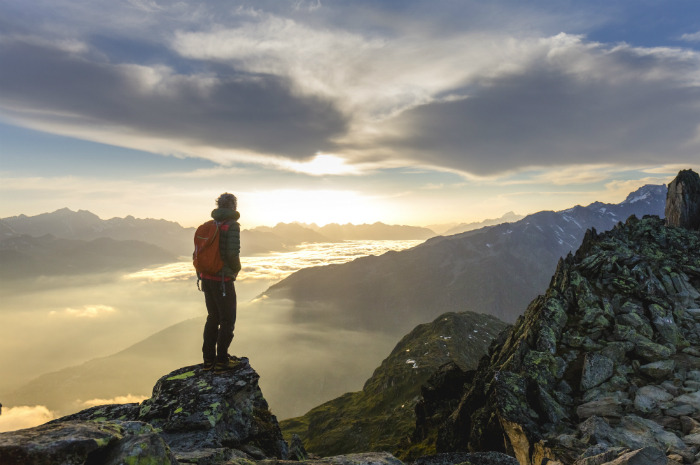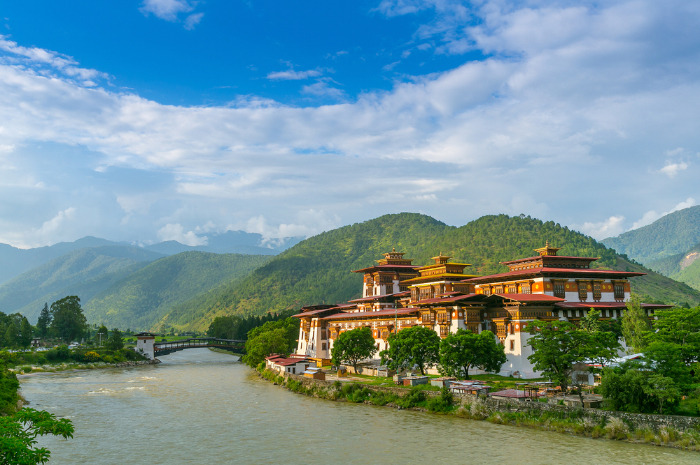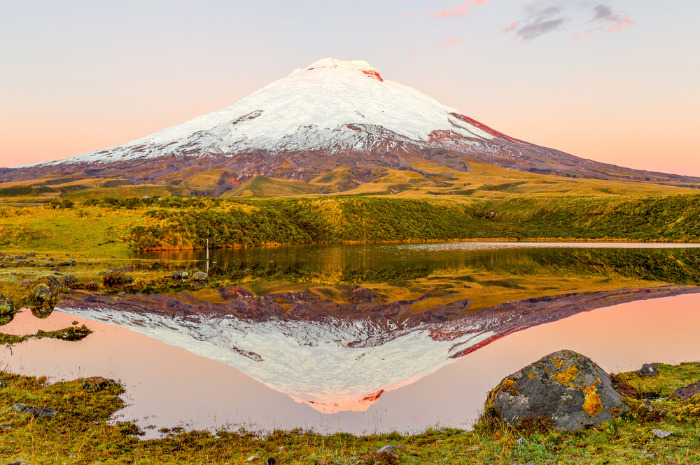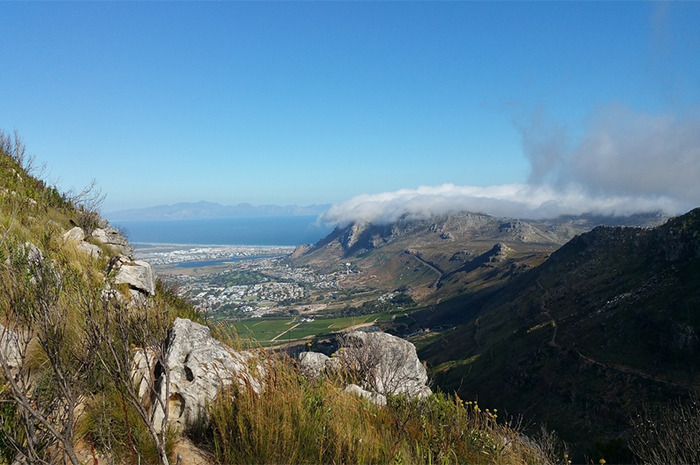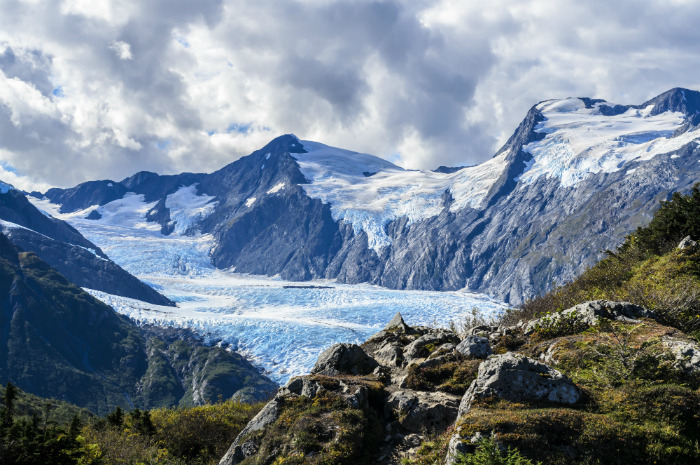26 Best Hikes In The World To Put On Your Bucket List
Exploring new places is always a thrilling adventure, regardless of the destination. Getting there by foot is by far the most exhilarating, especially if it takes days, weeks, or even months to reach the endpoint of your journey.
Milford Track—New Zealand
This magnificent hike was once described as the finest walk on Earth. It certainly is one of New Zealand's most popular walks, with approximately 14,000 people completing it every year. Some of the highlights along the way include the country's tallest waterfall, spectacular valleys and rivers, as well as glacier-carved fiords. It'll take about four days to see everything the Milford Track has to offer.
John Muir Trail—California
The Scottish-born world famous naturalist was the catalyst in the creation of Yosemite National Park, and his namesake trail runs 211 miles between Yosemite Valley and Mount Whitney (the highest point in the Lower 48). One of the most worthwhile sections is the 58-mile journey from Mammoth Lakes to the valley. You can walk for 2 or 3 weeks without crossing a road. It crosses Yosemite, Ansel Adams and John Muir wilderness, Kings Canyon and Sequoia National Parks.
West Coast Trail—Canada
Hiking the West Coast Trail guarantees you an encounter with wild animals, especially bears, a walk through narrow gullies, and climbing shaky wooden ladders. The place is so dangerous, it is illegal to stay overnight in the off-season between October 1 and April 30. Technically, though, it can be done. But many expert hikers advise against it. Currents are too strong. Also, you can't just leave the trail. Are you going to swim? There is no easy way out.
Overland Track—Australia
The 40-mile trail will take your through the heart of Tasmania's World Heritage-listed wilderness filled with lakes, forests, gorges, mountains, moors, spectacular waterfalls and steep, stony peaks. Completing the track will take about a week of short and day walks from the Cradle Mountain Visitor Centre and Dove Lake. The route has eight basic stove-heated huts, but there's no guarantee of space. The best time to walk the track is between November and April, when the weather is milder and days are longer, according to Australia.com.
Tour du Mont Blanc—Switzerland, Italy, France
Trekking rarely gets much better than this superb and spectacular path that unwinds around the Mont Blanc massif. Your reward by completing the 104-mile trail in about 3-4 days is seeing the most jaw-dropping and stunning panoramas of mountains and glaciers in Italy, Switzerland and France. This is one of the most talked about long-distance treks in all of Europe and it's certainly an adventure of a lifetime. The best time to go is in the summer.
Appalachian National Scenic Trail—Maine to Georgia
The Appalachian National Scenic Trail is a 2,190-mile footpath along the ridge crests and across the major valleys of the Appalachian Mountains from Katahdin in Maine to Springer Mountain in northern Georgia. Thru-hikers taking on this classic backpacking adventure complete the entire length of the Trail in one season. The approximate gain/loss in elevation is 464,500 feet. The trip is one of the most iconic of its kind for "self-discovery."
Dagala Thousand Lakes Trek—Bhutan
This 6-day trek takes you into a region full with pristine, crystal clear lakes. As you walk amidst the sparkling waters, where you can go fishing and relax, you'll be treated to spectacular views of the entire Himalayan mountain range and some of the world's highest peaks including Mt. Everest, Jomolhari, Masang Gang, and Jichu Drake. The trail also takes you through several traditional Bhutanese villages. The best time for this trek is April-June or September –October.
Fitz Roy Trail—Argentina
The towers of pink-tinged gray granite, painted by sunrise in shades of brilliant orange and blood red, take your breath away. It is sublime view, a spectacle, the best reason to come here. Fitz Roy at 11,020 feet is the star of the show, but the big glaciers to the south are major players as well. The 52-mile trek takes about 10 days to complete.
GR20 Route—Corsica
GR stands for "grande randonnée" which means "great trek"; and this is exactly what you're going to get. This may very well be Europe's toughest mountain trek. Many call it the continent's hardest long-distance trek. It's worth the effort and challenge because you get to see remarkable scenery, magnificent colors and free roaming wildlife. You will walk through towering pinnacles, deep forests, windswept craters, glacial lakes, and snow-capped peaks.
Trek to Petra—Jordan
The 50-mile strenuous trek will take about a week to complete. Petra is on everyone's bucket list, but arriving through Jordan's desert wilderness instead of the sprawling parking lot enhances the experience in unforgettable ways. By the end of the trail, you will have walked through four biosphere climates along the road from Dana Nature Reserve southwards to the ancient "Rose-Red City" of Petra.
Pacific Crest Trail—California, Oregon, Washington
Completing this trail is every adventurer's dream, but it'll take months. The 2,650-mile-long Pacific Crest Trail extends from Canada to Mexico and traces a north-south route through the Cascades, Sierra Nevada and coastal ranges of Southern California, sticking mostly to national forest land and passing through seven national parks. Among the trail's many iconic waypoints are Yosemite National Park, Crater Lake and Mount Rainier. By the end, you will have also explored several lavish forests as well as harsh deserts.
Annapurna Circuit—Nepal
The Annapurna Circuit is in central Nepal and passes Mount Annapurna, the world's 10th highest mountain. Known as "the best long distance trek in the world," the trek treats you to high-altitude Himalayan passes and pristine beauty. It is 150 miles and takes about three weeks to hike. It is a "teahouse trek"; there are villages with guesthouse to eat and stay in along its full length. You'll be hiking, not climbing. It has generally been considered a safe hike and can be managed by the average outdoor enthusiast.
Stairway to Heaven—Oahu, Hawaii
This is one of the most epic hikes in Hawaii, but it's illegal. The trail, also called Haiku Stairs, is officially closed. This doesn't discourage adventurous hikers from trying their luck reaching the spectacular Puu Keahiakahoe summit to take in the view of the lavish Koolau mountain range. The stairs, which reach a peak of nearly 3,000 feet, were installed during World War Two as a way for soldiers to access a radio station antennae.
El Camino de Santiago—Spain
This is a large network of ancient pilgrim routes stretching across Europe and coming together at the tomb of St. James in Santiago de Compostela in north-west Spain. Some call the hike Medieval Europe's answer to the Appalachian Trail. It will take about a month to complete the trek, which is challenging but not too strenuous. Most of the stages are fairly flat on good paths. Thousands of people embark on the journey every year.
Teton Crest Trail—Wyoming
The Teton Crest Trail is the highlight hike of Grand Teton National Park in Wyoming. Explore the glorious Teton Range, witness the high divides and passes, majestic alpine lakes, and stunning views at the legendary rocky peaks. The best time to go is between July and September when you'll see all kinds of colors, flowers and wildlife. There are plenty of campsites in case you decide to take a break along the 37mile-trail.
Torres Del Paine Circuit Trek—Chile
Popular among backpackers and adventurous travelers, Torres del Paine National Park attracts roughly 150,000 visitors to its remote wilderness every year. It encompasses lakes, ancient forests, rivers, mountains and glaciers. The trail is much less crowded on the back end of the park. You have to book a camping spot ahead of time during the high season in January and February.
Zion National Park—Utah
Angel's Landing is one of the most famous and thrilling hikes in the U.S., certainly in the Zion National Park. However, it's not recommended for people who are afraid of heights. The very narrow trail in Zion's main red rock canyon will definitely test your physical limits. Another favorite is the most famous and dangerous hike in the park – The Narrows. The gorge's walls are a thousand feet tall and the river is sometimes just 20 to 30 feet wide. It is easy to hike the park's slot canyons – when it's not raining.
Rwenzori Mountains —Uganda
When people think of hiking in Africa they usually imagine Mount Kilimanjaro. Rwenzori Mountains, often referred to as the Mountains of the Moon, are not very well known but they may very well be the continent best secret. They make up the highest range in the continent at over 16,000 feet. Hiking the mountains is an incredible experience; you will be in awe of the otherworldly alpine valleys, plants, forests, glaciers and wildlife, especially elephants.
Long Range Traverse—Newfoundland, Canada
The Long Range Traverse is an unmarked and rugged backcountry route. It starts from Western Brook Pond and leads towards Gros Morne Mountain, which alone is a reason to visit Canada. Gros Morne's ancient landscape is a UNESCO World Heritage Site. Recent glacial action has resulted in some spectacular scenery, with coastal lowland, alpine plateau, fjords, glacial valleys, sheer cliffs, waterfalls and many pristine lakes.
Mount Kilimanjaro—Tanzania
Mount Kilimanjaro is the tallest free-standing mountain in the world and the highest peak on the African continent. It is also a great honeymoon destination. To the truly adventurous honeymooners, nothing could be more romantic than setting out to conquer this challenging climb together. Hikers walk up an uncrowded route to a "Hemingway-style" safari camp at the summit, where the main reward is the absolutely breathtaking views.
Grand Canyon Rim-to-Rim-to-Rim—Arizona
The Rim-to-Rim hike is one of the longest hikes there. It's a 44-mile round trip, which usually takes 5-7 days to complete. Visitors say it's no stroll in the park; it's a strenuous hike, which takes a lot of endurance. However, if you train for this hike beforehand and you know what to expect, you will encounter one of the most memorable experiences of your life. You'll leave from the North Kaibab Trail on the North Rim, descending 14.3 miles and 6,000 feet to the bottom of the canyon before connecting with the Bright Angel Trail and climbing 4,500 feet and 9.6 miles back out again to the South Rim, according to NPS.
Scottish National Trail—Scotland
The Scottish National Trail is a 470-mile-long walking route running the length of Scotland from Kirk Yetholm to Cape Wrath. The trek starts with long-established footpaths and they continue for much of the distance, but eventually become progressively more difficult. Every minute is worth your effort as you are surrounded by legendary Scottish landscapes every step of the way.
Half Dome Trail—Yosemite National Park, California
This is Yosemite's most iconic attraction and most prestigious hike. The trail to Half Dome from Yosemite Valley is an extremely strenuous hike covering over 17 miles, according to Yosemite.com. Hikers gain 4,800 feet of elevation along the trail that passes highlights such as Vernal Fall and Nevada Fall, before reaching the cables on Half Dome's steep granite domes. The cables are removed every October, and replaced in late May.
Cotopaxi—Ecuador
Hiking to the second highest mountain in all of Ecuador and one of the highest active volcanoes in the world is an adventure like few others. Maybe it's the opportunity to see wildlife like the endangered Andean condor, the Andean speckled bear (also endangered), llamas, or any of the other species that call the park home, but Cotopaxi is an adventure destination worthy of spot on a bucket list.
Hoerikwaggo Trail—South Africa
This outstanding trail is usually walked from south to north, ending with a climb up the back of Table Mountain, a natural wonder, and steep descent down Platteklip Gorge. Another natural landmark you'll see along the way is Cape Point in the Cape of Good Hope Nature Reserve. Hiking the entire 55-mile trail takes about four or five days.
Portage Pass—Alaska
This is a short hike but, as is the case with most trails in the stunning Alaska, it is worth every step. The hike is one you won't find in the Southern states. The end of the trail offers a very close look at the Portage glacier from the shores of the lake. The best view requires a descent to the shore but even without the trek downhill, the views are spectacular. Another hike worthy of your time is Mount Marathon. Formerly known as Lowell Mountain, it holds a marathon every 4th of July in Seward.
